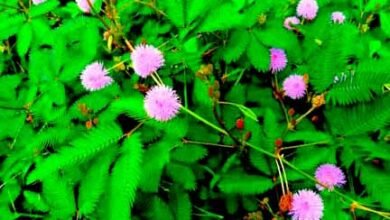
कई बीमारियों की एक दवा…
मानसून के आगमन के साथ ही बाजार में काले जामुन दिखने लगते हैं. जामुन का फल ही नहीं, इस वृक्ष के जड से लेकर पत्ती तक उपयोगी होता है. इसका वैज्ञानिक नाम (Syzygium cumini) है. यह एक सदाबहार वृक्ष होता है, इसके  फल बैंगनी रंग के होते हैं. यह वृक्ष भारतएवं दक्षिण एशिया के अन्य देशों एवं में भी पाया जाता है. जामुन का पेड़ आम के पेड़ की ही तरह काफी बड़ा लगभग 20 से 25 मीटर ऊंचा होता है और इसके पत्ते 2 से 6 इंच तक लम्बे व 2 से 3 इंच तक चौड़े होते हैं. जामुन के पेड़ की छाल का रंग सफेद भूरा होता है. इसके पत्ते आम और मौलसिरी के पत्तों के ही जैसे होते हैं. जामुन के पेड़ की उम्र लगभग सैकडों साल बतायी गयी है. आमतौर पर जामुन के पेड़ में बीमारी कम से कम होती हैं. जामुन के फूल अप्रैल के महीने में लगते हैं, और जुलाई से अगस्त तक जामुन का फल पक जाता हैं. इसके कच्चे फल का रंग हरा और पका फल बैगनी, नीला, काला और अन्दर से गाढ़ा गुलाबी होता है.
फल बैंगनी रंग के होते हैं. यह वृक्ष भारतएवं दक्षिण एशिया के अन्य देशों एवं में भी पाया जाता है. जामुन का पेड़ आम के पेड़ की ही तरह काफी बड़ा लगभग 20 से 25 मीटर ऊंचा होता है और इसके पत्ते 2 से 6 इंच तक लम्बे व 2 से 3 इंच तक चौड़े होते हैं. जामुन के पेड़ की छाल का रंग सफेद भूरा होता है. इसके पत्ते आम और मौलसिरी के पत्तों के ही जैसे होते हैं. जामुन के पेड़ की उम्र लगभग सैकडों साल बतायी गयी है. आमतौर पर जामुन के पेड़ में बीमारी कम से कम होती हैं. जामुन के फूल अप्रैल के महीने में लगते हैं, और जुलाई से अगस्त तक जामुन का फल पक जाता हैं. इसके कच्चे फल का रंग हरा और पका फल बैगनी, नीला, काला और अन्दर से गाढ़ा गुलाबी होता है.
इसका स्वाद अम्लीय व कसैला और मीठा होता है. अम्लीय प्रकृति के कारण सामान्यत: इसे नमक के साथ ही खाया जाता है. जामुन का फल 70 प्रतिशत तक खाने योग्य होता है.इसमें ग्लूकोज और फ्रक्टोज दो मुख्य स्रोत होते हैं. इस फल में खनिजों की मात्रा अधिक होती है, अन्य फलों की तुलना में यह कम कैलोरी प्रदान करता है. एक मध्यम आकार का जामुन 3-4 कैलोरी ही देता है. इसमें विटामिन बी, कैरोटिन, मैग्नीशियम और फाइबर भी पाए जाते हैं. जामुन में लौह व फास्फोरस प्रचुर मात्रा में होता है. जामुन में कोलीन तथा फोलिक एसिड भी होता है. इस फल के बीज में काबरेहाइड्रेट, प्रोटीन, कैल्शियम की अधिकता होती है, साथ ही इसमें ग्लुकोसाइड, जम्बोलिन, फेनोलयुक्त पदार्थ, पीलापल लिए सुगन्धित तेल की भी काफी मात्रा में होती है.
प्राचीनकाल में अधिकतर जामुन के वृक्ष तालाब और बावडियों के पास इसलिए लगाये जाते थे, कि इनकी जडें काफी गहराई तक चली जाती हैं जिससे तालाब के पानी को शुद्ध रखने में मदद करती हैं. गांव में कुआं बनाते समय नींव में जामुन के लकड़ी का ही उपयोग किया जाता था. जामुन की लकडी जल को शुद्ध करने का काम करती है और जल को खराब होने से बचाती है. जामुन का वृक्ष आंधी में भी नहीं गिरता इसलिए बाग के चारों ओर इसके वृक्ष लगाये जाते हैं. जामुन का अधिक मात्रा में सेवन करने से गैस, बुखार, सीने का दर्द, कफवृद्धि व वात विकारों के रोग भी हो सकते हैं. जामुन को हमेशा खाना खाने के बाद ही खाना चाहिए. जामुन खाने के तुरन्त बाद दूध नहीं खाना चाहिए. कालानमक, कालीमिर्च और सोंठ का चूर्ण छिड़ककर खाने से उसके सारे दोष दूर हो जाते हैं.
- जमुन को मधुमेह के बेहतर उपचार के तौर पर जाना जाता है.
- पाचनशक्ति मजबूत करने में जामुन काफी लाभकारी होता है.
- यकृत (लिवर) से जुड़ी बीमारियों के बचाव में जामुन रामबाण साबित होता है.
- अध्ययन दर्शाते हैं कि जामुन में एंटीकैंसर गुण होता है.
- कीमोथेरेपी और रेडिएशन में जामुन लाभकारी होता है.
- हृदय रोगों, डायबिटीज, उम्र बढ़ना और अर्थराइटिस में जामुन का उपयोग फायदेमंद होता है.
- जामुन का फल में खून को साफ करने वाले कई गुण होते हैं.
- जामुन का जूस पाचनशक्ति को बेहतर करने में सहायक होता है.
- जामुन के पेड़ की छाल और पत्तियां रक्तचाप को नियंत्रित करने में कारगर होती हैं.
========== ========== =========
A medicine for many diseases…
With the arrival of the monsoon, blackberries start appearing in the market. Not only is the fruit of Jamun, but it is also useful from root to the leaf of this tree. Its scientific name is (Syzygium cumin). It is an evergreen tree, its fruits are purple in color. This  tree is also found in India and other countries in South Asia. Like the mango tree, the Jamun tree is about 20 to 25 meters high and its leaves are 2 to 6 inches long and 2 to 3 inches wide. The color of the bark of the Jamun tree is white-brown. Its leaves are similar to mango and maulsiri leaves. The age of the Jamun tree has been said to be hundreds of years. Generally, diseases are least in Jamun trees. The flowers of Jamun appear in the month of April, and the fruit of Jamun ripens from July to August. The color of its raw fruit is green and ripe fruit is purple, blue, black, and dark pink from the inside.
tree is also found in India and other countries in South Asia. Like the mango tree, the Jamun tree is about 20 to 25 meters high and its leaves are 2 to 6 inches long and 2 to 3 inches wide. The color of the bark of the Jamun tree is white-brown. Its leaves are similar to mango and maulsiri leaves. The age of the Jamun tree has been said to be hundreds of years. Generally, diseases are least in Jamun trees. The flowers of Jamun appear in the month of April, and the fruit of Jamun ripens from July to August. The color of its raw fruit is green and ripe fruit is purple, blue, black, and dark pink from the inside.
Its taste is acidic, astringent, and sweet. Due to its acidic nature, it is generally eaten with salt. Jamun fruit is edible up to 70 percent. Glucose and fructose are the two main sources of it. This fruit is rich in minerals, it provides fewer calories as compared to other fruits. A medium-sized jamun gives only 3-4 calories. Vitamin B, carotene, magnesium, and fiber are also found in it. Iron and phosphorus are abundant in Jamun. Jamun also contains choline and folic acid. The seed of this fruit is rich in carbohydrates, protein, and calcium, along with it also contains glucoside, jambolin, phenolic substance, and aromatic oil for yellow apples.
In ancient times, most of the Jamun trees were planted near ponds and step-wells because their roots go deep enough, which helps in keeping the water of the pond pure. While making a well in the village, only Jamun wood was used in the foundation. Jamun wood works to purify water and protects it from spoilage. Jamun tree does not fall even in a storm, so its trees are planted around the garden. Consuming jamun in excess can also cause diseases of gas, fever, chest pain, phlegm, and gout disorders. Jamun should always be eaten only after having food. Milk should not be consumed immediately after eating Jamun. Sprinkling black salt, black pepper, and dry ginger powder and eating it, all its defects go away.
- Jamun is known as a better treatment for diabetes.
- Berries are very beneficial in strengthening digestive power.
- Berries prove to be a panacea in the prevention of diseases related to the liver.
- Studies show that Jamun has anticarcinogenic properties.
- Berries are beneficial in chemotherapy and radiation.
- The use of berries is beneficial in heart diseases, diabetes, aging, and arthritis.
- Jamun fruit has many properties that cleanse the blood.
- Jamun juice helps in improving digestion.
- The bark and leaves of the Jamun tree are effective in controlling blood pressure.





